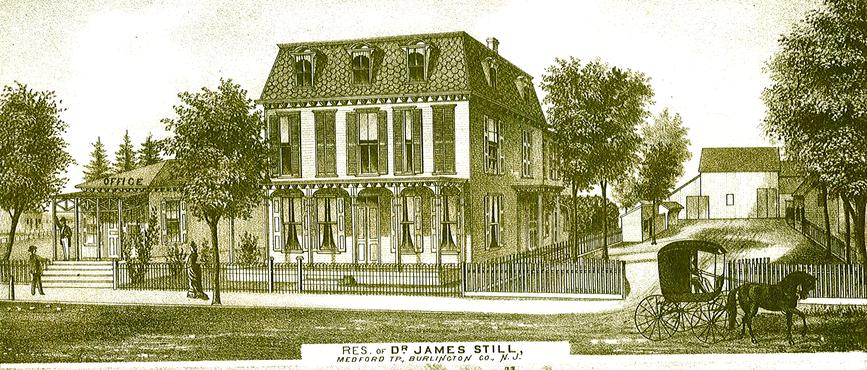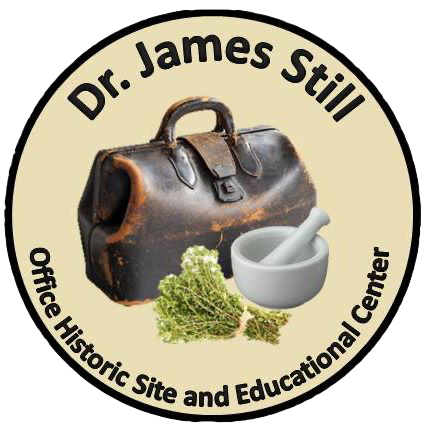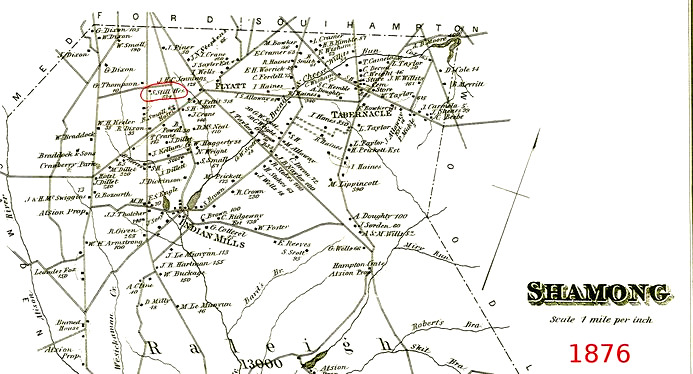The Still Family history in New Jersey is unique, but not so different from many other African American families. Rich in history and fakelore, the story of Levin and Charity Still's documented history began in the late 1700’s. Charity's name, prior to her escaping the peculiar institution of American slavery, was Sidney. Her husband’s last name was Steel and not Still.
Levin and Sidney Steel lived on two nearby plantations between Talbot and Caroline Counties in Maryland. Levin’s slave owner was young man named William Wood and they were close to the same age. Sidney’s slave owner was Alexander Griffin. Levin was able to purchase his freedom in 1798. He stayed around on the Maryland Eastern shore area in order to keep a close eye on his wife, Sidney.
Around 1805, Levin, with some help from nearby abolitionists, left Maryland and traveled to Greenwich, New Jersey. Soon afterwards, Sidney attempted her first escape with her 4 children. Sidney and her children were soon captured and returned to the Griffin plantation. Sidney soon attempted a second escape, but this time made a traumatic decision to leave her two young boys, Levin Jr. and Peter, behind. This decision would impact Sidney's mental health for the reminder of her life.
Finally, Levin and Sidney reunited in Greenwich, New Jersey. Leaving Greenwich soon after, the family headed further north in New Jersey. They soon found themselves in Evesham, New Jersey where there were other fugitive and free Africans living. They were befriended by an established South Jersey family with the last name Still. So in order to hide Sidney and her fugitive children from evil slave catchers, they changed her name to Charity and assumed a new last name, Still.
The South Jersey Still families had been thriving and living in New Jersey since the early 1700’s. Not much is known exactly when or where the Still last name derived from. What is known by way of early historical records is that South Jersey Still families were thriving in communities such as Burlington City, Mount Holly, Snow Hill (present day Lawnside), and Evesham, New Jersey. They essential grafted Levin and Charity into the South Jersey Still families.
With a new name, Levin and Charity Still relocated again to a remote area of New Jersey called the Pine Barrens. Levin worked as a woodcutter and farmer in order to support his family. Levin was able to purchase a plot of land from a freed African named Cato. The property would be referred to as "Cato Bounds". The Cato Bounds property was nearby the old Native American Brotherton Reservation, which was established in 1758. Here, Charity gave birth to 14 more children. Unfortunately, four of her children never made it to adulthood.
Three of the family's male children would grow up to be notable historical figures and their names were James, William and Peter Still. James Still would grow up and be a well known herbal doctor throughout the tri-state area. William Still would venture out and settle in Philadelphia, Pennsylvania and be a major conductor on the Underground Railroad. Peter Still would be left in the peculiar institution for 40 years and later be reunited with his family in 1850.
Over the centuries, there has been many assumptions and fakelore about the progeny of Levin and Charity Still. With much historical and scientific (DNA testing) research, some of the fakelore has been debunked.
The saga continues..........
DR. JAMES STILL HISTORIC OFFICE SITE AND EDUCATION CENTER
1st & 3rd Sundays
each MONTH
11;30 am - 4:00 pm





